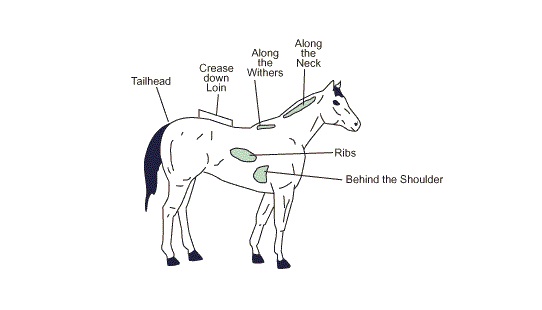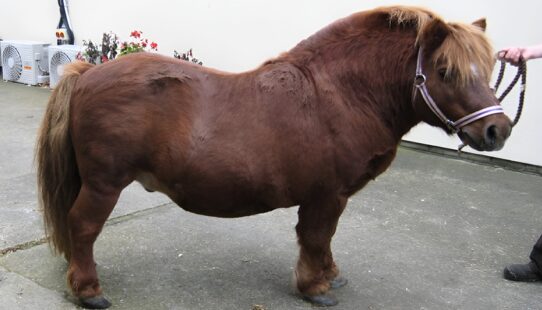One way to monitor your horse’s health and weight is by using a body conditioning score.
A horse is rated on a scale of 1-10 based on fat and visible appearance along the neck, withers, ribs, crease down the back, tailhead and behind the shoulders. This scale will help you determine if you horse is over or under weight or just right.
Most horses should be a score of 5-6,healthy scores can be different for one breed to the next. A horse with a score of 1 or 2 could have underlying health issues or has not been receiving the proper amount of nutrients. A horse with a score of 7 or higher may beat a greater risk of developing health issues due to the extra weight they are carrying.

- Poor : extremely emaciated, no fatty tissue can be felt, the spine, ribs, tailhead, hip joint and the bones on the neck, wither and shoulder are easily noticeable.
- Very Thin: Emaciated, slight fat covers the spine, ribs, tailhead, hips, spine and pelvic bone is still noticeable, and the wither shoulders and neck are less noticeable.
- Thin: Fat cover half of spine, slight fat over ribs, hips rounded, bones of withers, shoulders and neck slightly noticeable.
- Moderately Thin: Slight boney ridge on back, ribs still noticeable, hips withers shoulder and neck not notably thin.
- Moderate: Back is flat, ribs not visible but can be felt, wither rounded, shoulder and neck blend into body
- Moderately Fleshy: slight crease down back, fat over ribs and tailhead is soft, small fat deposits around neck, withers, and shoulders.
- Fleshy: crease down back, some ribs can be felt fat can make harder to feel all, some fat deposits around withers, tailhead, shoulders and neck
- Fat: noticeable crease down back, ribs hard to feel, fat filled area around neck &withers, behind shoulder, fat deposit on inner thighs
- Extremely Fat: Very noticeable crease down back, patches of fat the ribs, bulging fat around tailhead, withers, neck and shoulders, fat on inner thighs may rub together.
The way to help you determine your horse’s body score is by using a weight tape, do a physical exam of your horse to feel for excessive fat or prominent bony areas.
Talk to your vet if you are concerned with your horse’s body conditioning score, they can make recommendations how to get your horse to optimal body weight and check for any medical issues.
A body score should be reassessed every 2-4 weeks, taking several pictures as before photos will help you see the progress your horse has made.
Reducing your horses BCS: feed ratios are decrease and exercise increased a mature horse can lose about 50-60 pounds over 4 to 6 weeks. This can result in a 1-point loss in their body condition score. During this period of time, it’s important to monitor the horse’s progress and make changes as need be.
Increasing your horse’s BCS: Feed rations should be gradually increased using highly digestible fiber grain sources and using fat supplements such as vegetables oil or over the counter weigh gainer products. Approximately 35-45 poundsor weight gain due to increased level of nutrition will increase your horse’s BCS 1 point.


Pingback: Monitoring your horse’s health with Body ...